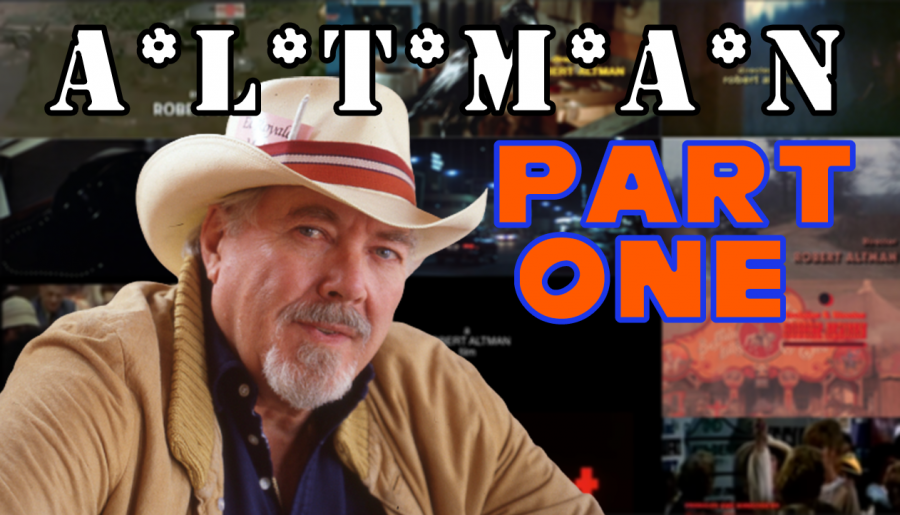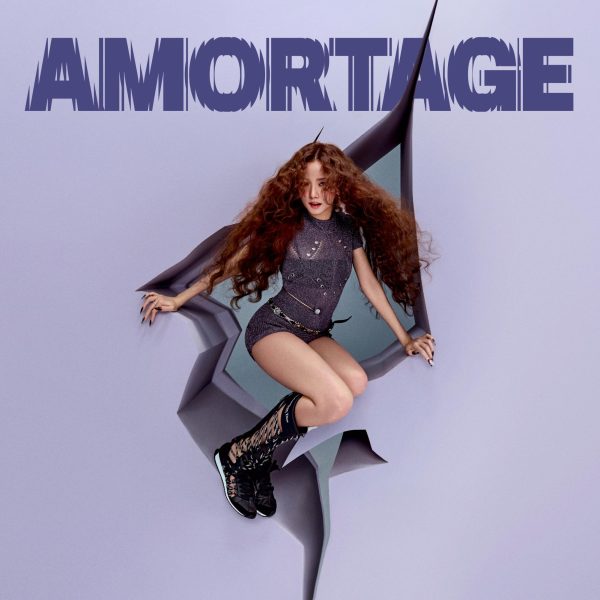Robert Altman: The Greatest Director of the ‘70s
Film director Robert Altman had a varied and fascinating career, and in this article we explore the first half of his 1970s work.
This piece is part one of a two part series.
Very few filmmakers in the history of the art form have made movies that were thoughtful, entertaining, and consistent. It seems that most modern auteur directors wait several years between projects, and those who pump out movies every year are less talented. However, this does not hold true for Robert Altman, who got his start directing in the late ‘50s and made a film nearly every year until 2006, all the while maintaining a high level of quality. His breakthrough came with 1970’s M*A*S*H, a raucous wartime comedy that established Altman’s style: fuzzy, widescreen visuals with lots of zooms, overlapping, oddball endings, large casts filled with unusual stars, and at times, inaudible dialogue.
He preserved these elements in most of his prolific work from the 1970s until the release of Popeye, a commercial success that interestingly, cost him his career. While the film did decent business upon release, its box office receipts weren’t up to the level of Superman, the 1978 hit that the producers were attempting to imitate. Looking for a scapegoat, critics and executives pinned the film’s somewhat modest reception on Altman. It was the director’s first big studio film, and it would also be his last.
Altman spent the ‘80s making filmed plays before making a massive comeback in the ‘90s with the release of The Player and Short Cuts. This late-career renaissance continued until the making of his final film in 2006, released shortly before his death. Few can deny, however, that his 1970s run of films was his greatest period, and although this didn’t always mean big box office successes, nearly every film was beloved by both critics and audiences. After the release of his 1975 masterpiece Nashville, his follow-ups were less consistent, but still interesting. So today, we’ll be going through all 13 of his ‘70s movies, and seeing what they can tell us about the acclaimed director and America in the 1970s.
M*A*S*H (1970)
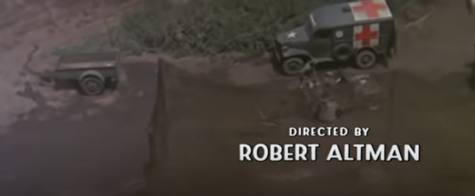
M*A*S*H had a difficult time getting made. It was written by blacklisted screenwriter Ring Lardner Jr., and the script was rejected by basically every major Hollywood director before Altman decided to make it. In addition, stars Elliot Gould and Donald Sutherland disliked Altman and tried to get him fired. But against all odds, it became the third most successful film of 1970. It remains Altman’s most financially successful film, and it’s also his most controversial. The film’s characters are blatantly racist, sexist, and homophobic, but the question remains: are the characters like this because they’re in the middle of a war and have degraded so much that they do bad behavior for fun, or are we as an audience supposed to laugh at them because racism is funny? It’s a tough question, and definitely one for a longer article. My view lies somewhere in the middle. In some scenes, it definitely seems as though the characters’ actions are looked down upon by the filmmakers, while in others, the goofy music makes it seem as though we’re supposed to be laughing along with the characters. It goes without saying that the film works best in the scenes showing the horrors of war, and the quieter moments between characters.
The opening sequence, showing bodies being airlifted into the camp, is chilling, set to the song Suicide is Painless, written by Altman’s 14-year-old son. The other scene that sticks out is the moment that gave the song its title, a disturbing sequence in which the army dentist Painless tells his friends that he thinks he may be gay. He isn’t attracted to men, but he “failed to deliver” when with a woman recently. He announces to his friends that he is going to commit suicide. They laugh, and then we cut to the platoon sitting in the mess hall in a formation incredibly similar to Leonardo Da Vinci’s The Last Supper. Two surgeons sing Suicide is Painless and Painless is handed a pill. He gets into a casket and we see him lying down in a red-colored room, motionless but still breathing. Captain Hawkeye brings in Maria, a female lieutenant, and leaves the two of them alone. The next morning Painless is cheerful again. What are we to make of this sequence? Did the presence of a woman scare the gay out of him? Was he gay in the first place?
It’s a scene that leaves you with more questions than answers, and this is part of why the film is so interesting to me. I legitimately cannot tell if the movie is problematic, as scenes involving Hawkeye and Trapper harassing a woman are immediately followed by incredibly gory scenes of graphic surgeries, wherein the same two characters make similarly crude jokes. We see that the horrors of the operating tables have made them so desensitized that they now treat corpses and people the same way. But, does it go far enough? Is it too obvious or not obvious enough? It’s a difficult watch regardless of your thoughts on its purpose, but the film still holds an undeniable power, especially the surgery scenes, which are incredibly realistic for the early ‘70s. And of course, it inspired the even more successful TV show of the same name.
Best performance: Rene Auberjonois, an Altman regular, plays the only decent man in the film, Father Mulcahy. As usual, he does an excellent job. He gives the movie a much needed shock of decency.
Brewster McCloud (1970)
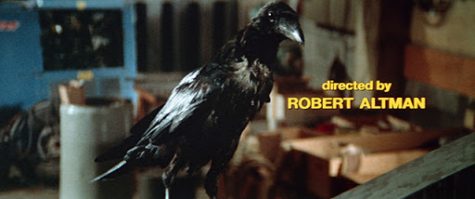
Brewster McCloud is probably my favorite Robert Altman movie. Released the same year as M*A*S*H, it was a disappointment critically and commercially compared to its predecessor, but in almost every other way, it’s superior. It’s aggressively strange but somehow it works because of a variety of reasons that are difficult to describe. First of all, it’s filmed in Houston, which is really cool, and while it’s not about the city like Nashville is, it certainly has a lot of Texas flavor. The plot centers around the impish Brewster McCloud, a boy who lives in the Astrodome that is trying to build wings. The large cast also includes the film debut of Shelley Duvall, and an incredibly strange performance by consistent Altman collaborator Michael Murphy. In the role of Shaft, Murphy plays a character intended to parody Steve McQueen’s title character in Bullitt. It’s a movie with a demented sense of humor, with racist characters getting killed by bird poop, the Metro-Goldwyn-Mayer (MGM) lion saying that he forgot his line, and continuous bird imagery.
It begins with a shocking and racially charged scene. An old woman, played by the actress best known for the role of The Wicked Witch of the West, shrieks the national anthem while standing on a podium in the Astrodome. As the film pans towards her, credits appear. She shrieks to the all-Black brass band to start over, and the camera goes back to its start point and the credits play again. Then, the brass band starts playing Lift Every Voice and Sing, widely considered to be the Black national anthem, drowning out the old white woman. The rest of the film carries this uneasy balance of off-kilter humor and political commentary. Although it was a flop upon release, it has aged far better than Altman’s other movie from 1970, M*A*S*H.
Best performance: Shelly Duvall is always a delight to watch on screen, and this, her first role, is one of her best performances. She has a wonderful, easygoing screen presence, being both funny and headstrong, much like Altman’s films.
McCabe and Mrs. Miller (1971)
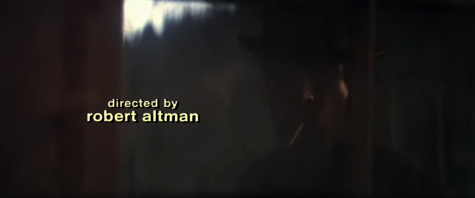
Throughout his long career, Altman experimented with almost every genre, from war movies to musicals to teen comedies. His most successful genre exercise however, was 1971’s McCabe and Mrs. Miller, a dark and haunting western. I’m not a huge fan of westerns but there’s something intangible about McCabe and Mrs. Miller: something that gives me chills just thinking about it. When I first saw it, I thought it was fine, but the more I think about it, the better it becomes, and the more it bores into my consciousness. Of course, it’s not a typical western, taking place in the snow and soundtracked exclusively with Leonard Cohen’s sad, slow acoustic songs.
Warren Beatty and Julie Christie, Altman’s first real movie star collaborators, give understated and excellent performances as frontier entrepreneurs. In terms of visuals and audio, it’s one of Altman’s most muddy and austere films, with a murky sound mix and smeared, foggy visuals. While many see this as a fault, to me it makes the movie more realistic, making it seem like it really was filmed in the old west.
Best performance: Beatty and Christie are obviously the stars here, and they do fantastic work. Christie has an icy but charming demeanor as Ms. Miller, and Beatty is smarmy but fascinating as McCabe.
Images (1972)
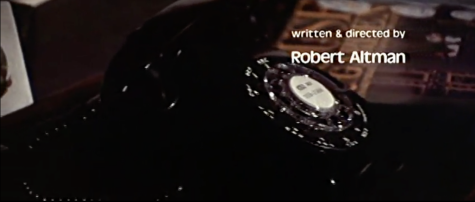
Images is a curiosity in Altman’s filmography. It’s a psychological horror movie, has a small cast, and features music from Star Wars composer John Williams. Like a lot of Altman’s films, it’s hypnotizing and strange, and represents a small subsection of his filmography: chilling thrillers about women experiencing strange, mind-bending occurrences.
Images is just fine, being a skeletal and cerebral experiment, with some quality performances. It remains a hidden gem among the master’s filmography.
Best performance: Susannah York has a great turn as the central protagonist. Reserved, but not afraid to let loose when the moment allows, York is perfect for the story. She also had a hand in the film’s writing.
The Long Goodbye (1973)
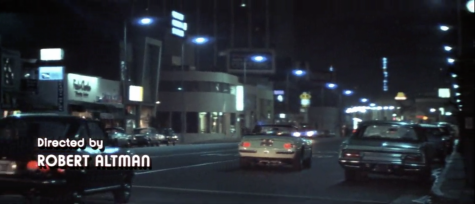
The Long Goodbye is one of Altman’s most beloved films, but I didn’t quite mesh with it. It’s aimless, and not in a good way. With a dull lead performance by Elliot Gould, overall, the movie seems tossed off. As one of his most popular films, perhaps I am due for a re-watch because I just did not enjoy it at all. It has a few bright moments, and a good score by John Williams, but its meandering nature is working against the story rather than helping it.
Best performance: Sterling Hayden does a decent job as the drunken Roger Wade. It’s not a particularly well-written part, but Hayden, an actor from much older films like Johnny Guitar and Dr. Strangelove tries his best with what he’s given.
Thieves Like Us (1974)
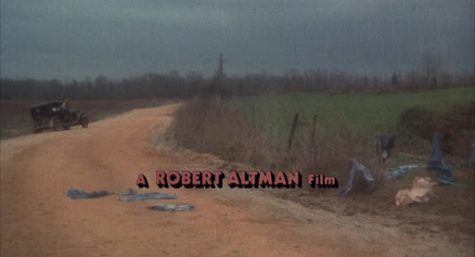
Thieves Like Us is among Altman’s best work, a character-driven crime movie that doesn’t feature that much crime. Altman’s films often put a subversive spin on genres, from a bleary and bleak take on a western to a shambling and comedic look at private eye stories. Thieves Like Us is a lovers-on-the-run tale set in the ‘20s, much like Bonnie and Clyde. Unlike McCabe and M*A*S*H however, it largely plays it safe, mostly resisting controversial deviations from its predecessors and even its source material, a novel by Edward Robinson (adapted earlier in 1948 as They Live By Night). It’s an easy film to like, and its best quality is its abundant charm and wonderful performances, with Altman’s typical fuzzy visuals, overlapping dialogue, and long zooms taking a backseat in favor of an unobtrusive visual and auditory style.
This proves to be a double-edged sword, as the film is easier to follow and more palatable, but because of this, it’s less memorable. I found myself wishing that Altman had tipped over into more surreal or introspective waters when telling this story. Despite its lack of experimentation, the film works well. Keith Carradine and Shelley Duvall have excellent chemistry, and the Mississippi landscapes feel realistic, dingy, and oddly beautiful. The soundtrack, which was made up entirely of vintage radio broadcasts, is also excellent. Besides Carradine and Duvall, both of whom are outstanding, the film’s cast also includes Burt Remsen and John Shuck.
Shuck, who was also in Brewster McCloud, plays Chicamaw, an alcoholic who is partners in crime with Remsen and Carradine. Remsen’s character brings some comic relief, which isn’t all that necessary, but he does a fine job. Altman adds a Coca-Cola bottle motif, a sly comment on the oncoming trend of consumerism that would soon devour the United States. The characters can’t stop drinking Coke—much like how Chicamaw can’t stop drinking alcohol—and how Carradine can’t stop going back to his life of crime. Thieves Like Us is a well made and believable movie that isn’t a masterpiece, but is still pretty darn good.
Best performance: Carradine and Duvall are both stellar as Bowie and Keechie, and in general, both seem to be Altman’s good luck charms. The Altman movies they graced were of extremely high quality. Neither of them are typical Hollywood beauties like Faye Dunaway or Warren Beatty (the stars of Bonnie and Clyde) and because of this, they feel all the more realistic. Carradine is charming and slightly sleazy as Bowie, a mix that he brought to his best roles (see also his character in 1981’s excellent Southern Comfort). Duvall is lovely as always in the role of Keechie. Shuck does a great job as Chicamaw, too, and Tom Skerrit as Keechie’s dad is great. Both previously starred in M*A*S*H, a film that couldn’t be more different to Thieves Like Us.

Class of 2023
I am currently Westwood Horizon's video editor, and also one of the hosts of Friendcast, our website's podcast video series. In addition...

